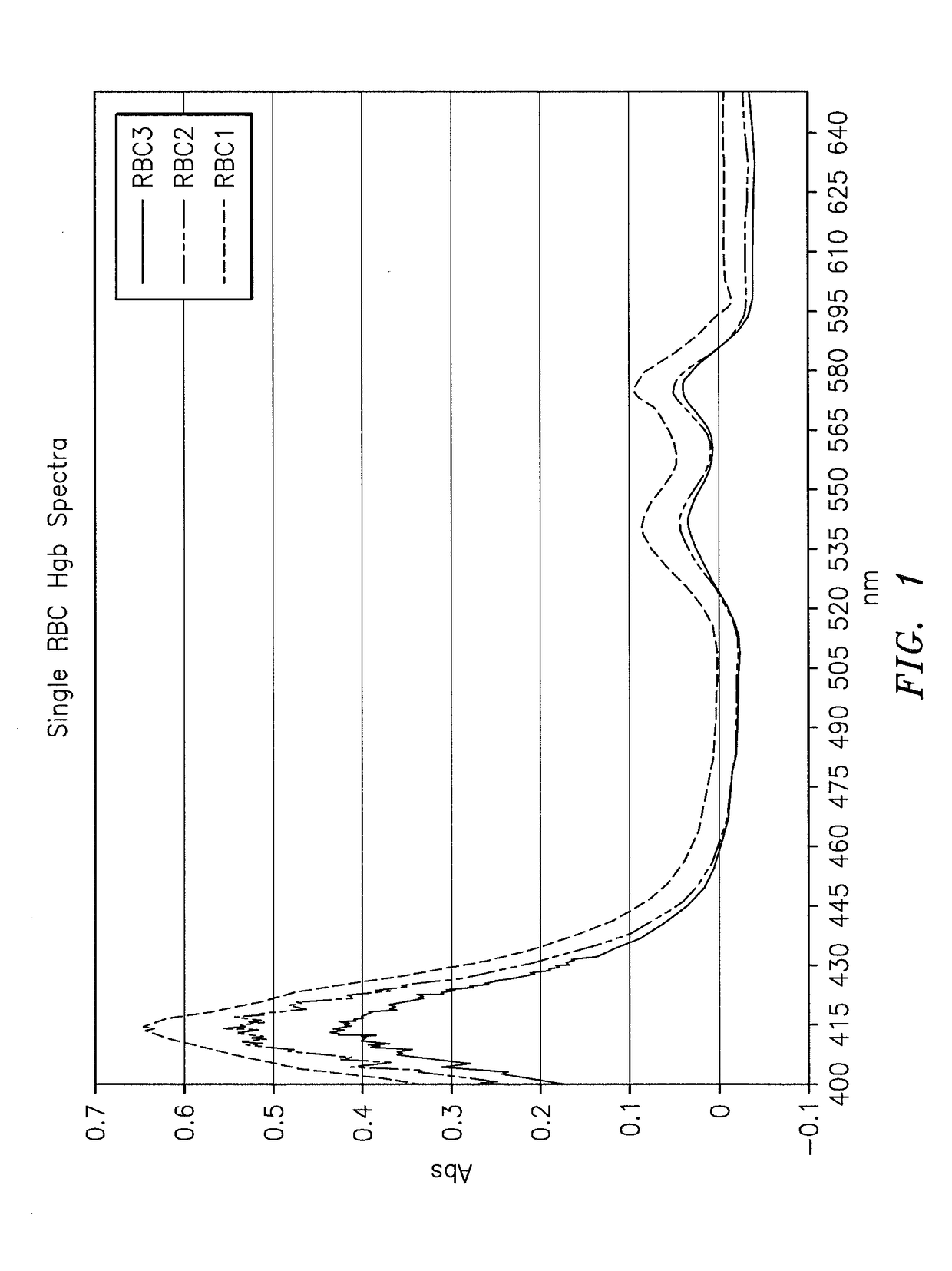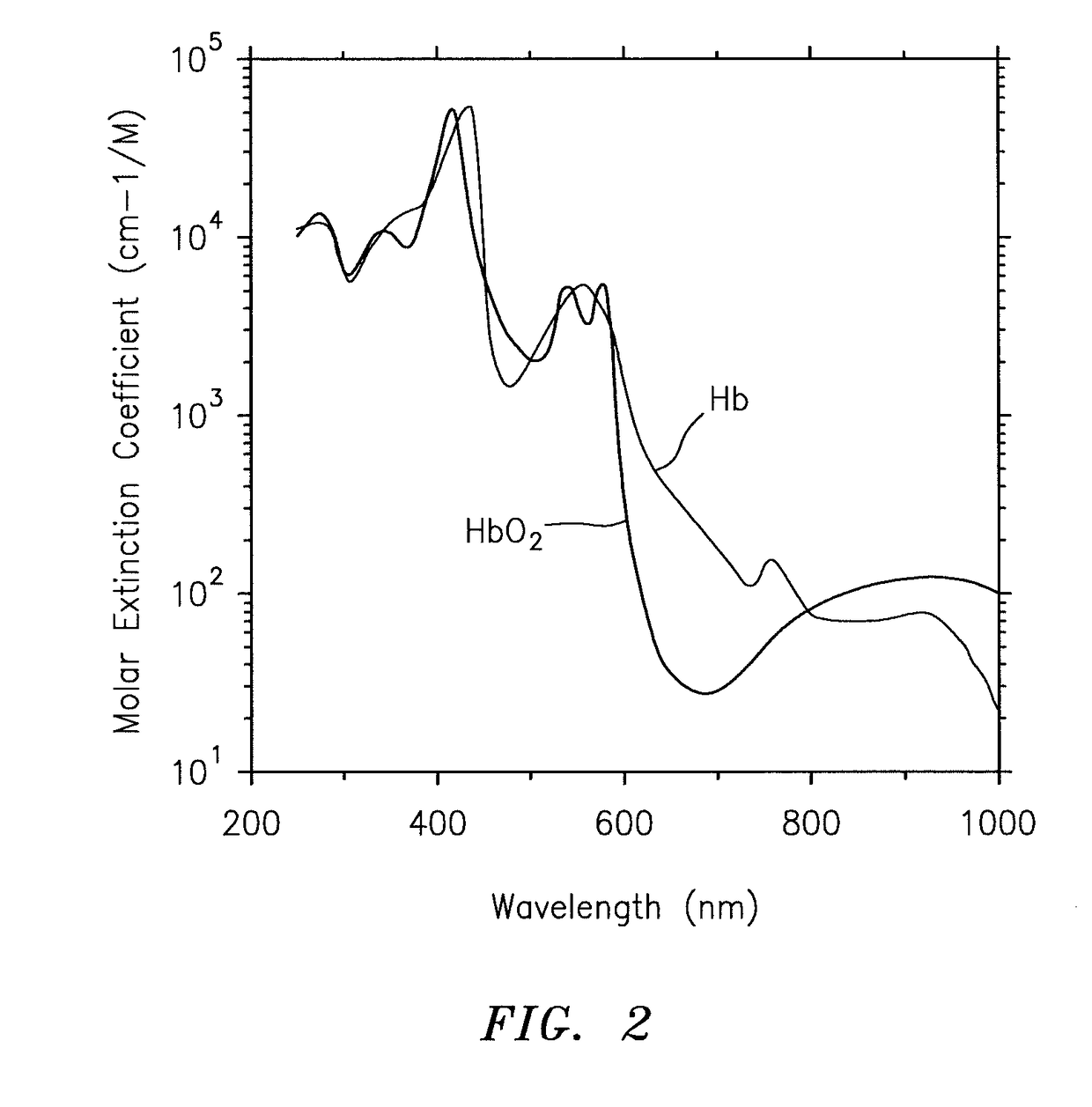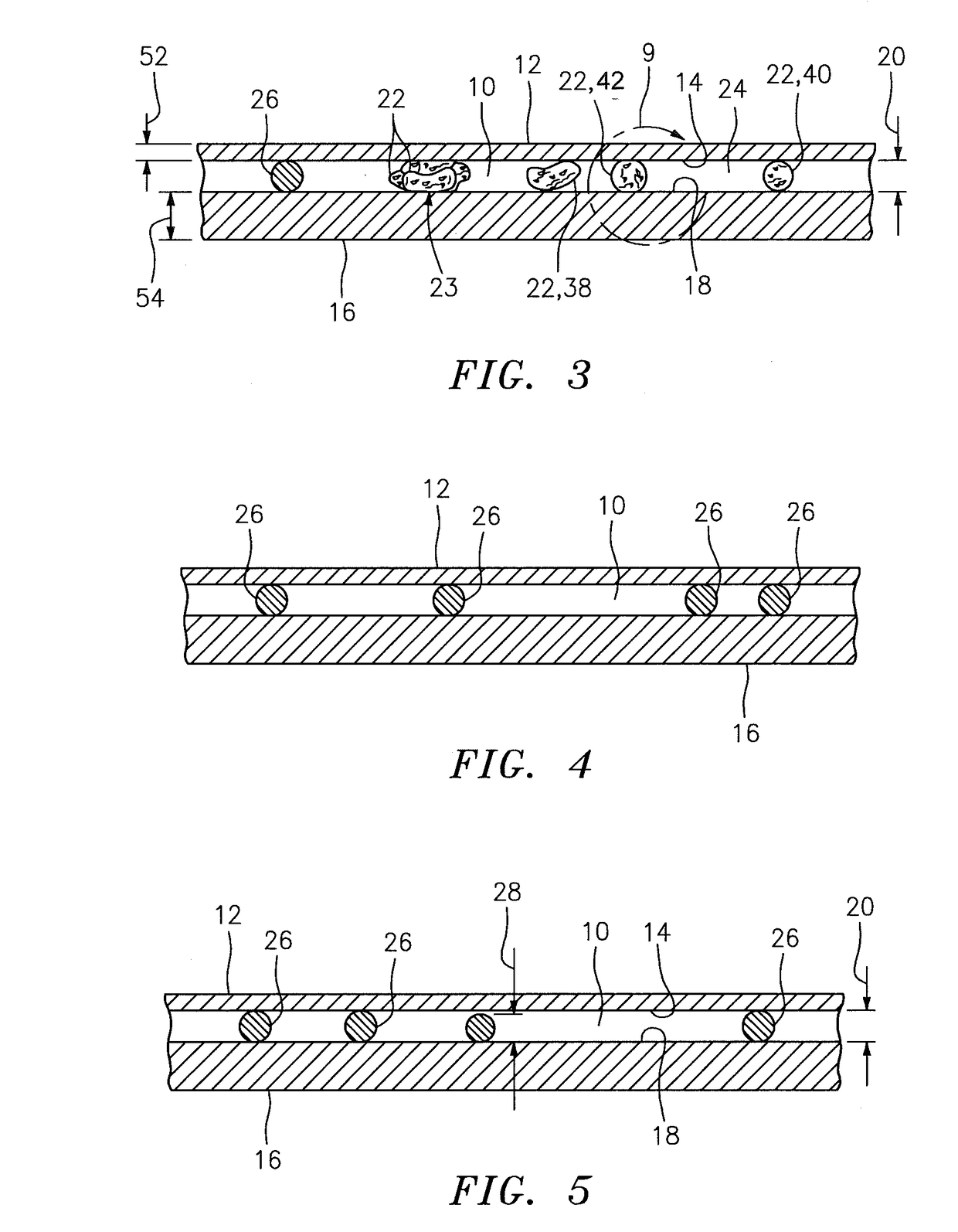Method for determining at least one hemoglobin related parameter of a whole blood sample
a technology of hemoglobin and blood sample, which is applied in the direction of instruments, specific use bioreactors/fermenters, biomass after-treatment, etc., can solve the problems of significant error in the calculation of related blood indices, large amount of information that can be determined by examining the blood of a human or animal, and adds expense and complexity to the process
- Summary
- Abstract
- Description
- Claims
- Application Information
AI Technical Summary
Benefits of technology
Problems solved by technology
Method used
Image
Examples
Embodiment Construction
[0024]The present method and apparatus for determining at least one hemoglobin related parameter of a whole blood sample allow a means for improving the accuracy of blood analyses. Analyzing a sample of substantially undiluted whole blood allows the determination of the red blood cell (RBC) cell volume (CV), mean cell volume (MCV), cell hemoglobin concentration (CHC), mean cell hemoglobin concentration (MCHC), and the mean cell hemoglobin content (MCH), as well as their population statistics, without the addition of any dyes, reagents (other than anticoagulants in some embodiments) or diluents to the sample.
[0025]The present method utilizes an analysis chamber that is operable to quiescently hold a sample of substantially undiluted anticoagulated whole blood for analysis. The chamber is typically sized to hold a relatively small amount of sample; i.e., about 0.2 to 1.0 μl of sample. The phrase “substantially undiluted” as used herein describes a blood sample which is either not dilu...
PUM
 Login to View More
Login to View More Abstract
Description
Claims
Application Information
 Login to View More
Login to View More - R&D
- Intellectual Property
- Life Sciences
- Materials
- Tech Scout
- Unparalleled Data Quality
- Higher Quality Content
- 60% Fewer Hallucinations
Browse by: Latest US Patents, China's latest patents, Technical Efficacy Thesaurus, Application Domain, Technology Topic, Popular Technical Reports.
© 2025 PatSnap. All rights reserved.Legal|Privacy policy|Modern Slavery Act Transparency Statement|Sitemap|About US| Contact US: help@patsnap.com



